As a pool owner, there's nothing worse than walking into your backyard and discovering your pool is green. Whether it turned overnight or has been gradually getting worse, green pool water is a clear sign of algae growth, poor circulation, or a chemical imbalance.
As your local pool experts, we’ll explain why your pool is green, whether it’s safe to swim in, and provide a complete step-by-step green pool fix so you can get your water clean, clear, and swim-ready fast.
Why is my pool green?
The most common reason your pool has turned green is algae. It grows rapidly in warm water, especially when your pool’s chlorine or filtration system isn't doing its job properly. Low free chlorine, poor pool maintenance, cyanuric acid levels that are out of balance and hot weather, can all lead to a green swimming pool.
Sometimes your pool water looks green but clear, which may suggest early-stage algae or metals reacting with chlorine. But if the pool water is green and murky, you're likely dealing with a full-blown algae infestation. If that's the case, then it's time to defy the sun's UV rays and kill algae.
Can you swim in a green pool?
In short, no. Even if your chlorine levels appear high, green pool water can still contain bacteria, algae spores, and other irritants that make it unsafe. It’s best to treat the issue quickly and wait until your water is properly cleared and rebalanced before jumping in.
How to fix green pool water
Restoring a green pool involves a few essential steps. With the right tools, pool chemicals, and some consistent effort, you can get it back to a safe and sparkling state.
Step 1: Test and assess your water
Before doing anything, take a water sample and test for:
- Free chlorine
- pH levels
- Cyanuric acid levels
- Total alkalinity
Sometimes the pool is green but chlorine is high, which means your chlorine is locked or ineffective. Testing helps guide the correct green pool treatment and dosage.
Step 2: Remove visible debris
Use a net to clear out any floating debris like leaves, insects, or twigs. If you can see the pool floor, vacuum any visible debris. This reduces the organic load and helps your filter work more effectively.
Step 3: Brush walls, floor, and surface
Use a stiff pool brush to scrub algae from the pool walls, pool floor, and water’s surface. This lifts algae into the water column so your sanitiser can attack it properly.

Step 4: Shock the pool
Perform a strong shock treatment using a chlorine shock product such as calcium hypochlorite.
- Add 3 to 5 times the normal chlorine dose
- Run the pool pump for at least 24 hours
- Ensure your filtration system is clean and circulating properly
If the pool is dark green, you may need to shock it more than once to achieve full green pool recovery.
Step 5: Add algaecide
After shocking, use a quality pool algaecide to kill off any remaining green algae or algae spores. This step improves effectiveness and helps prevent regrowth. Choose a product suitable for your pool type and follow the appropriate dosage listed on the label.
Step 6: Run your filter continuously
Let your pool filters and pump run for 24 to 48 hours. This helps remove dead algae, suspended particles, and remaining contaminants. Clean or backwash the filter during this period if the pressure rises.
If the water still has a greenish hue, repeat the cleaning and filtering process until clear.
Step 7: Rebalance your chemicals
Once the water is clear, rebalance your pool chemicals:
- pH: 7.2 to 7.6
- Total alkalinity: 80ppm to 120ppm
- Free chlorine: 1ppm to 3ppm
- Cyanuric acid: 25ppm to 50ppm for outdoor pools without sanitiser probe and 15ppm to 25ppm for outdoor pools with sanitiser probe
Balancing water chemistry ensures proper sanitiser efficiency and reduces the chance of the pool turning green again.
Optional: Use a flocculant
If you need to clear a green pool overnight, using a flocculant can speed things up. It binds small particles into clumps that settle on the pool bottom. You’ll need to vacuum the settled debris manually to waste.
Flocculants are helpful when preparing for an upcoming pool party, but they do add to the cleaning process.
How to prevent your pool from turning green again
Once you’ve completed the green pool fix, keeping your pool clean should become a priority. Here are a few ways to prevent future algae outbreaks that turn pool water green:
- Maintain proper chlorine levels
- Brush the pool surface weekly
- Remove floating debris daily
- Test water and adjust chemical balance weekly
- Check for phosphates in the pool
- Clean your filters regularly
- Use preventative pool algaecide during warmer months
- Adjust chemicals after heavy rain or hot weather
Routine care will help you avoid sudden algae issues and keep your water looking its best.
Quick summary: How to fix a green pool
- Test your pool water
- Remove debris and vacuum if needed
- Brush all surfaces thoroughly
- Shock with chlorine
- Add algaecide
- Run your filter nonstop for 24–48 hours
- Rebalance your pool chemicals
This method helps fix a green pool fast. In most cases, you’ll notice improvement within 24 hours. More severe cases, especially those involving black algae, may require extra treatment.

Green pool recovery
Green water is frustrating, but not unfixable. Whether your pool water is green from algae, low chlorine, or filtration issues, this green pool recovery guide gives you everything you need to get back on track.
By following these steps and staying on top of maintaining water quality, your swimming pool will return to being a clean, safe place for relaxation and fun.
Now that you know how to fix a green pool, the next time your pool turns green, you’ll be ready to act fast and get it sparkling again.




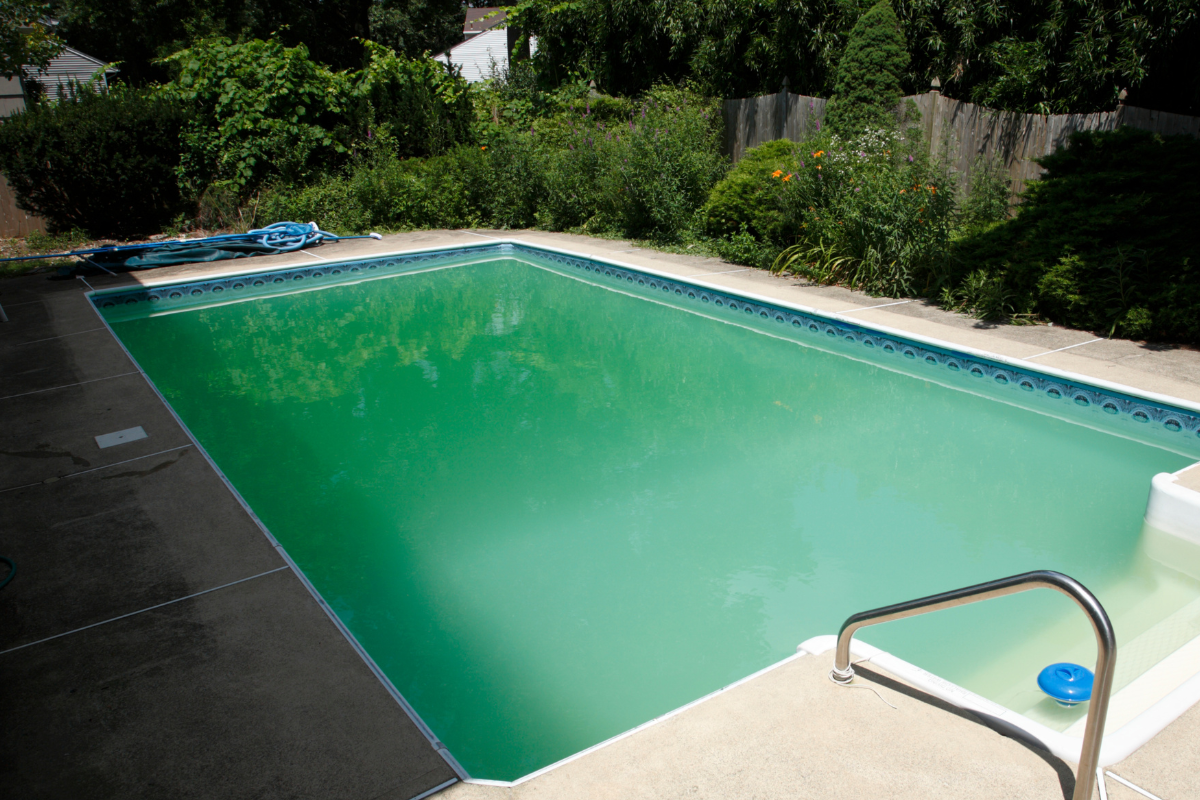
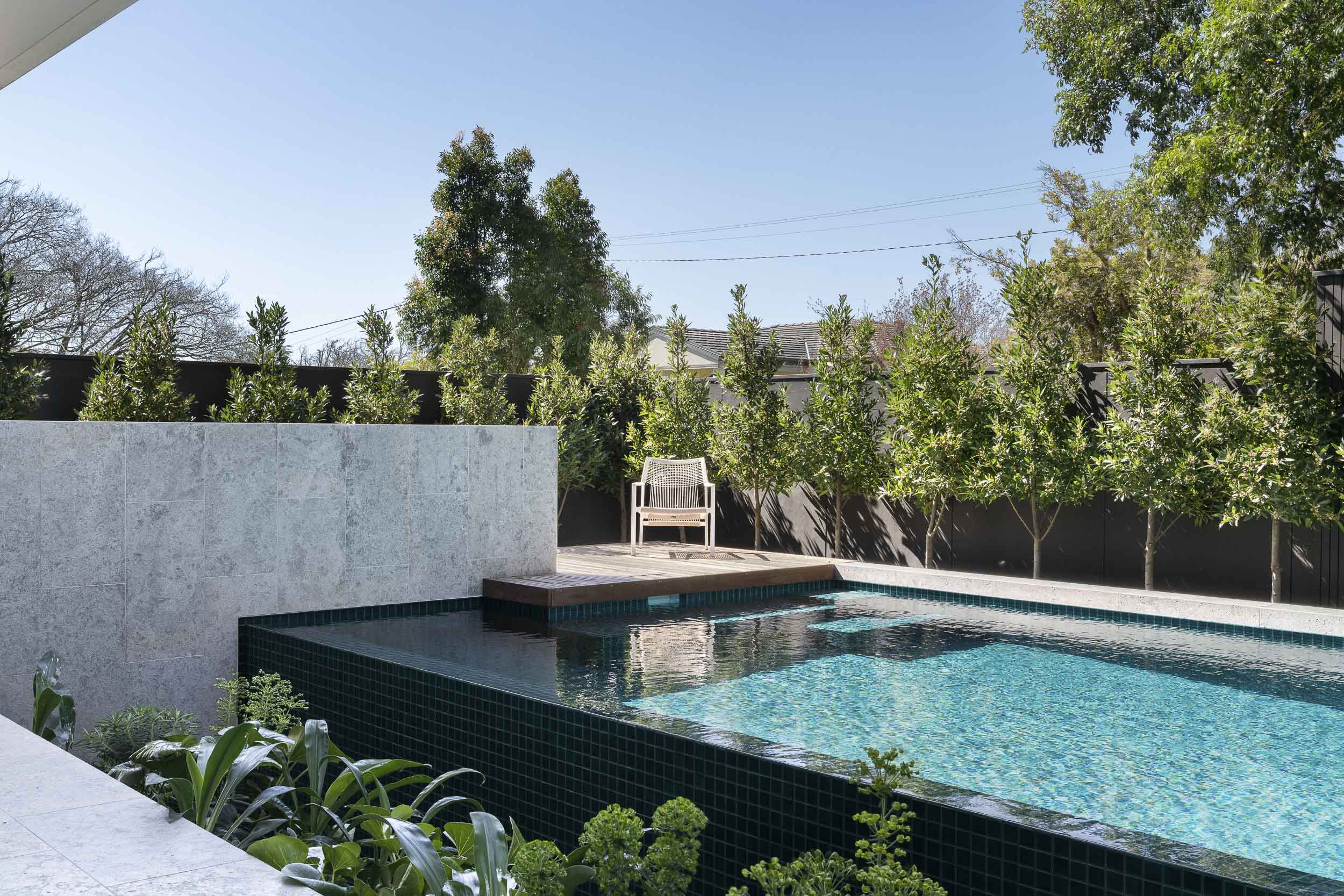
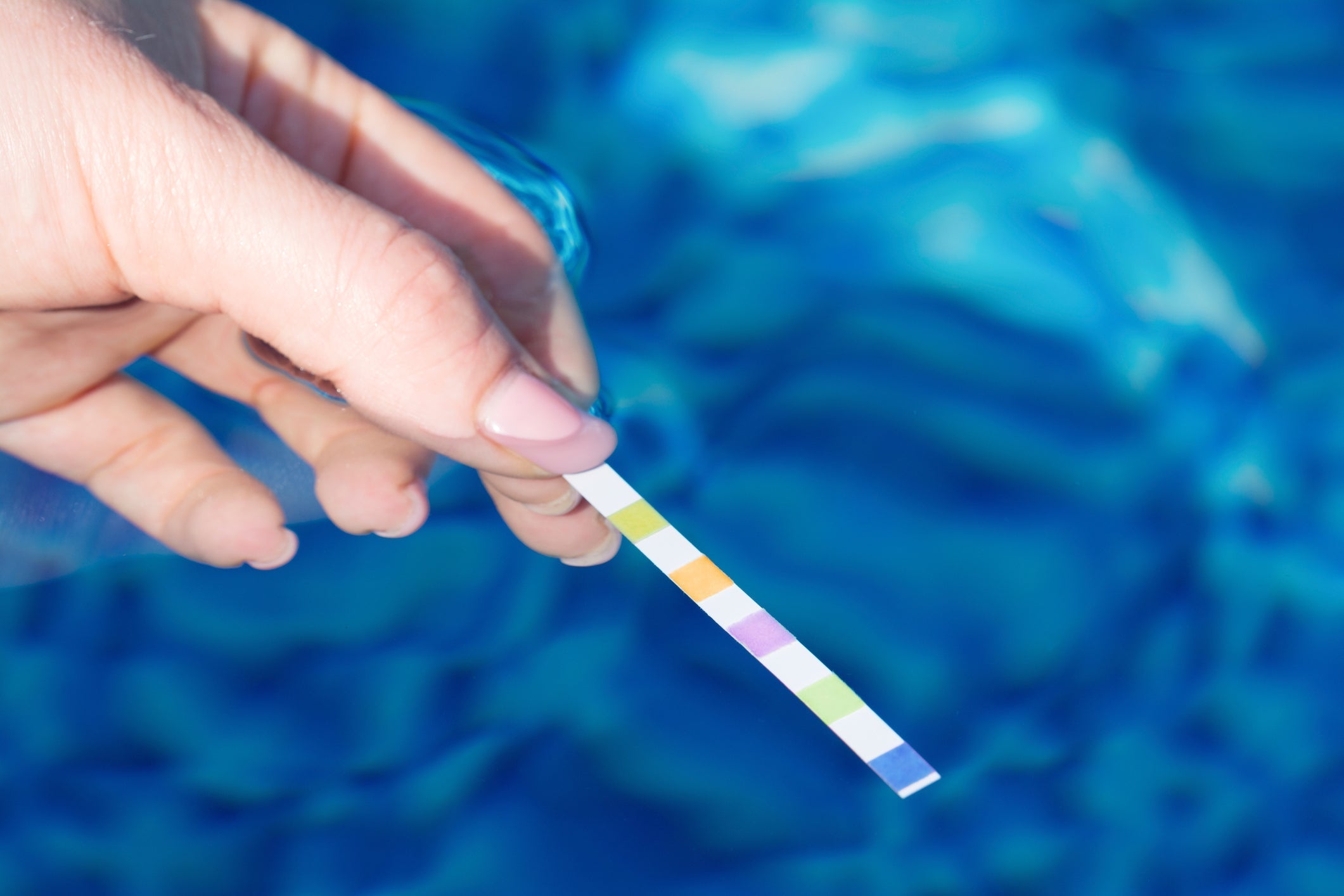
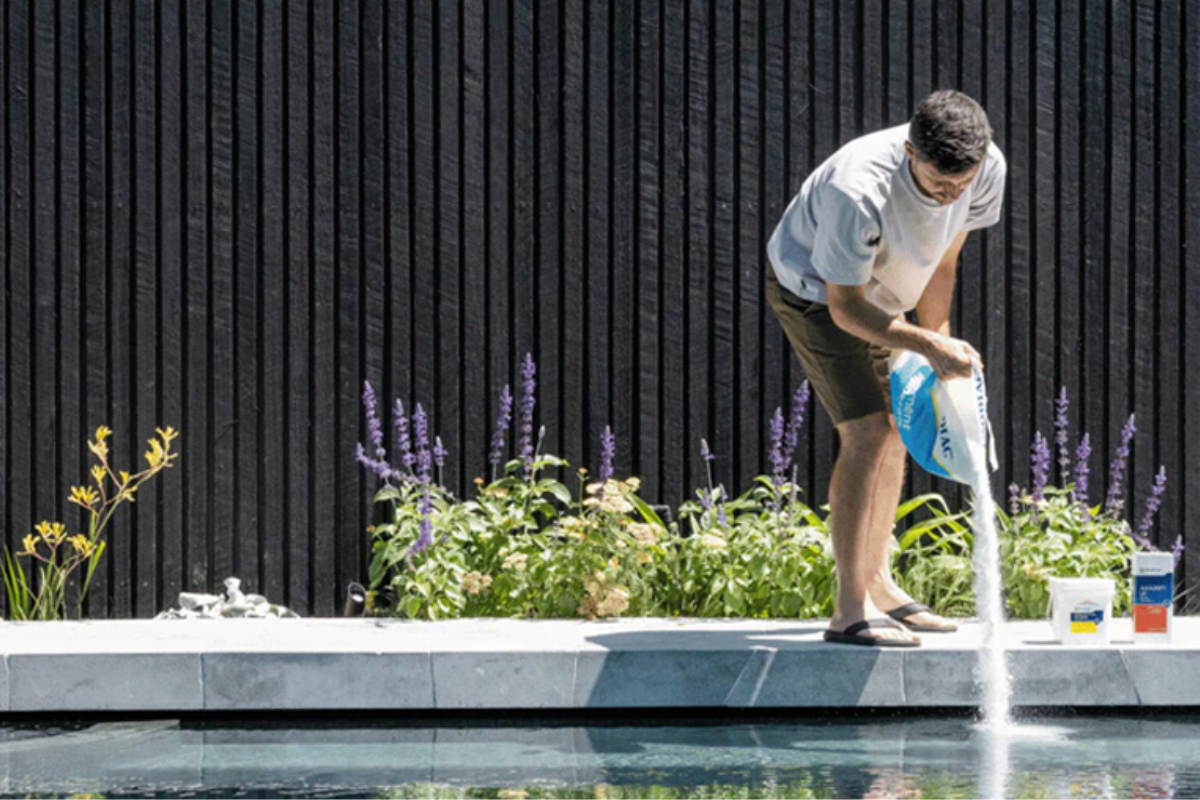
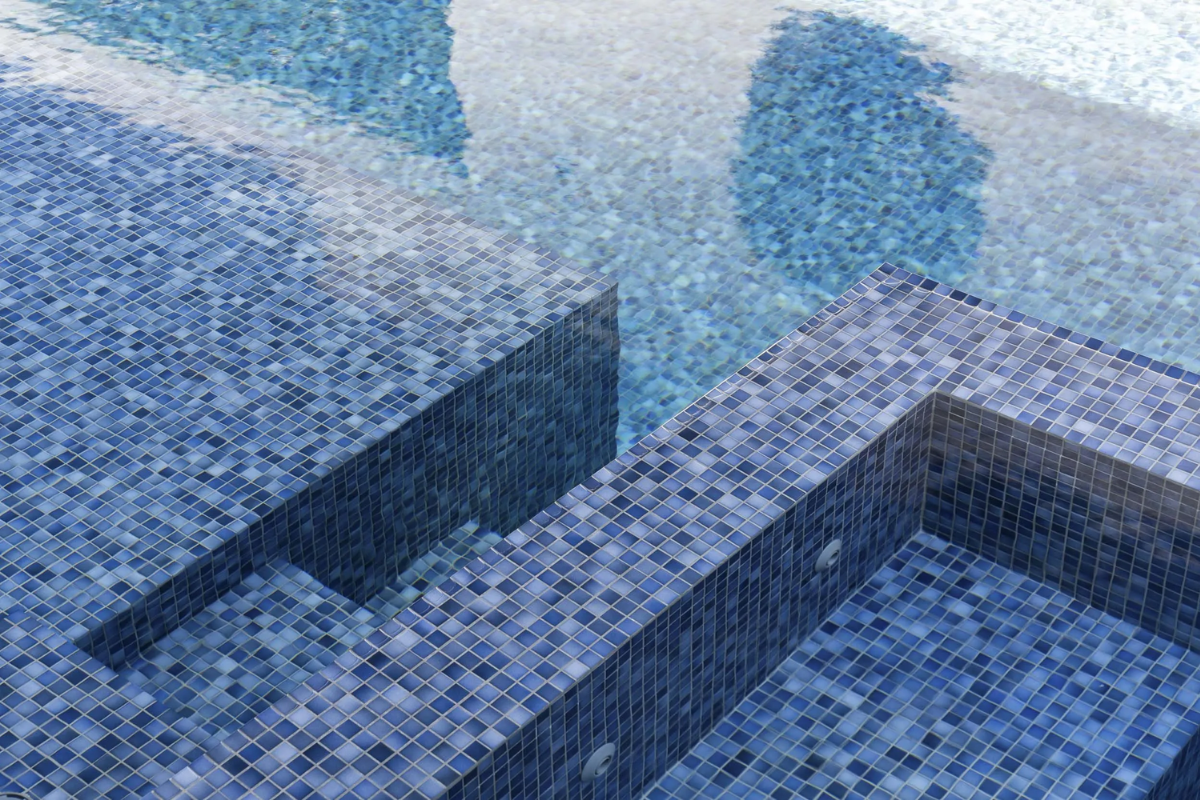
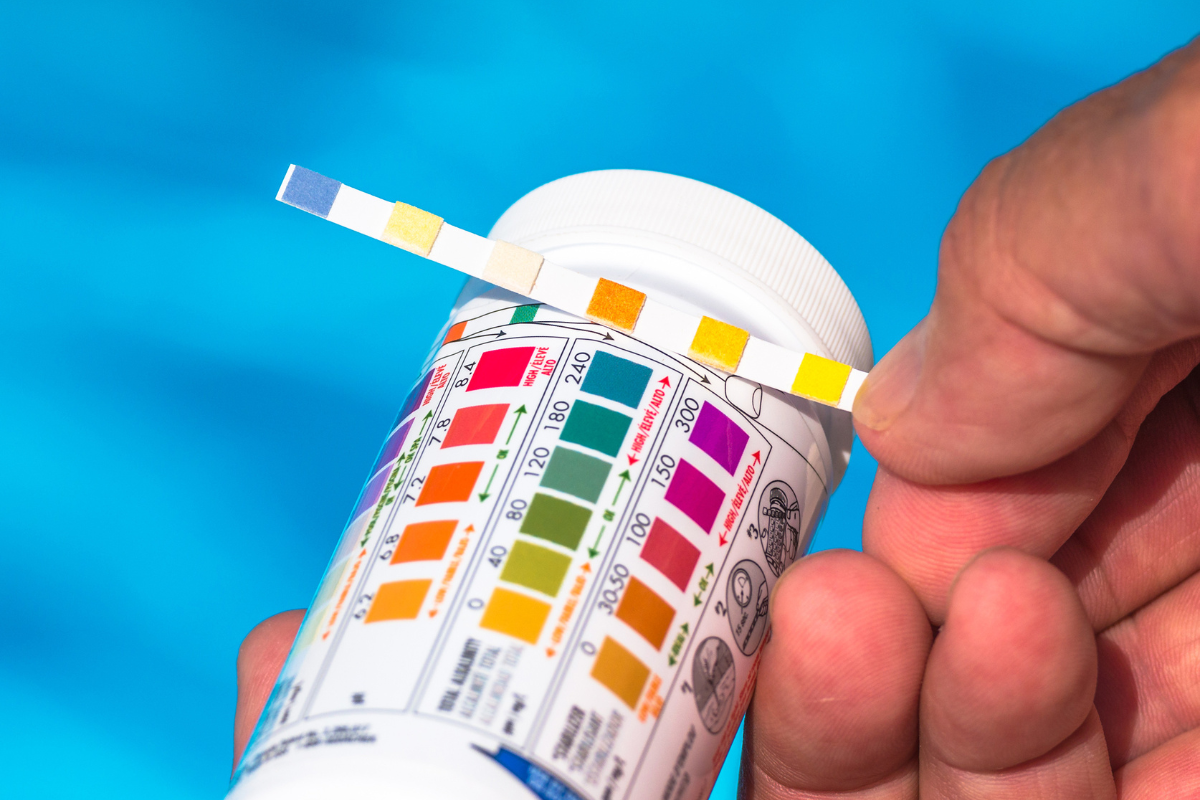
Share:
What Level Should Pool Alkalinity be?
How to Check the Chemical Balance of Your Pool?